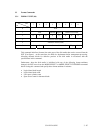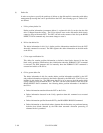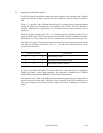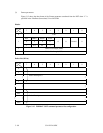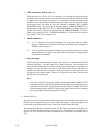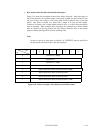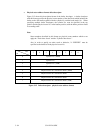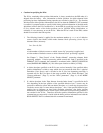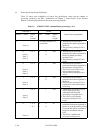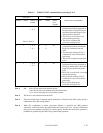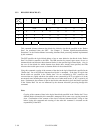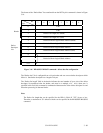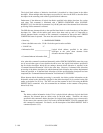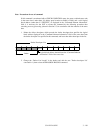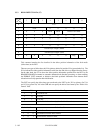C141-E124-01EN 3 - 95
x Cautions in specifying the D list
The P List, containing defect position information, is always recorded on the IDD when it is
shipped from the factory. Also, information on defect positions for which alternate block
processing has been implemented during operation are recorded as the G List. The function
which specifies defect position information as the D List when the FORMAT UNIT command
is executed, is prepared mainly to specify initial defect position information of the disk media
which does not have the P List recorded on it. In the IDD, by specifying use of the P List and
G List, advance notice of the defect positions can be specified during initialization, so
ordinarily, it is not necessary to use the D List. When the D List is used for the IDD, caution
should be exercised in the follow points.
1. The following formula is applied for the maximum number (p = n + m) of defective
sectors (logical data blocks) which make alternate block processing (sector slip or
alternate sectors) necessary.
3n + 5m d 61,436
where,
n is the number of defective sectors to which “sector slip” processing is applied, and
m is the number of defective sectors to which “alternate sector” processing is applied.
See Chapter 3 “Data Format” of the “Product Manual” concerning alternate block
processing methods. If defect processing which exceeds this limit is specified in the
FORMAT UNIT command, that command is terminated with a CHECK CONDITION
status (HARDWARE ERROR [=4] / No defect spare location available [=32-00]).
2. A defect descriptor specified as the D List are received normally if the specified defect
position information is within a range which does not exceed the disk drive’s physical
boundaries (User Space), and is recorded as the G List, but formatting processing is
executed only for the User Space in the range specified in the “Block descriptor” and
“Format parameters” (Page 3), and the “Drive parameters” (Page 4) of the MODE
SELECT parameter.
3. If a defect descriptor in the “Byte distance from the Index format” is specified in the D
List, depending on the byte position of the specified defective byte, 2 sectors may be
processed as defective sectors with one defect descriptor, or 1 sector may be processed as
a defective sector with 2 or more defect descriptors. Also, if the specified defective byte
position has no influence on data block read/write operations, that defect position
information is disregarded and is not the object of defective sector processing, and thus is
not recorded in the G List. Therefore, the defect position information specified in this
command may not necessarily coincide with the defect position information read with the
READ DEFECT DATA command after this command is terminated.



